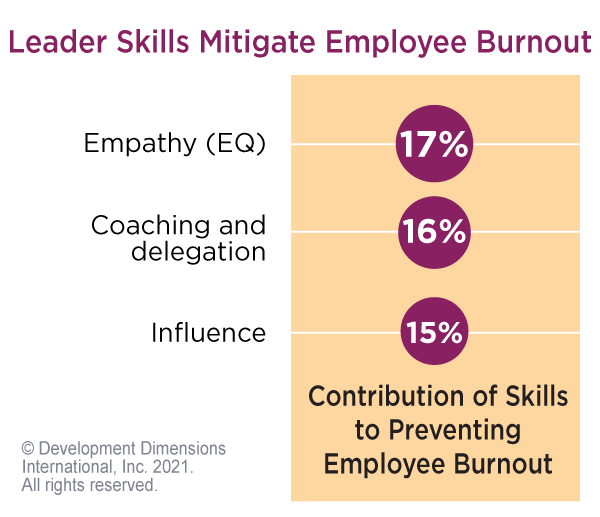“Sooner or later, everything old is new again.” This quote from Stephen King popped into my head as a group of remote leaders I was working with spontaneously shared their concerns about their pending return to the physical workplace. The reality is that most of them had long been leading what is considered, by definition, a hybrid team.
These leaders and most of their team members worked together in the same physical location. But they also had a few remote team members. One or two of them ventured to say, although a bit tentatively, that the cadence and culture of the past can be applied to the hybrid team of the future. However, the astute among them saw things differently.
These leaders wanted to know what they can do to prepare for this new hybrid workplace. In the span of a few minutes, they were able to see challenges and opportunities: a hallmark of change leadership.
As organizations around the world struggle with how to bring employees back to work, the stakes couldn’t be higher. While the numbers vary from study to study, there are some consistent themes that senior leaders cannot ignore. Employees want flexibility and many will leave if they don’t get it. One survey showed nearly 40% of workers would consider quitting if they can’t continue remote work in some capacity.
At the same time, employees are torn between a strong desire for more flexible work and an equally strong desire for the collaboration of in-person work. While the hybrid workplace and hybrid teams might be viewed as the great compromise of the future, organizations that get this right will have a huge competitive advantage.
How Do You Define a Hybrid Team?
Hybrid teams, in which employees operate from a mix of locations, come in all shapes and sizes. Organizational policies, along with manager discretion, will inform what they look like and the degree of flexibility that goes along with them.
Some will offer employees complete flexibility to choose from fully remote, fully in the office, or something in between. Others will establish specific days or weeks where all or some team members will be in the office.
Additionally, fully remote team members alongside team members who split their time working remotely and working in the office is another type of hybrid team. This is where the old is new again.
Leaders and employees did not have to manage and adapt to these various and changing combinations with hybrid teams of the past. They were predictable, and so were the ways in which these teams worked together. Frontline leaders and their teams need to establish the "new norms" for communication, collaboration, and working together as a high-performing team.
What Are the Advantages and Disadvantages of Working with a Hybrid Team?
Leaders are the linchpin to driving employee engagement. And this is especially true and perhaps more challenging with hybrid teams.
However, leaders can start by maximizing the advantages of a hybrid team and addressing the potential disadvantages or challenges. For example, it may be more of a challenge to build and maintain a culture of trust with a hybrid team. And communication and connection across a hybrid team will likely look a little different and perhaps take more planning.
In terms of advantages, hybrid teams offer the flexibility that is key to attracting, retaining, and engaging employees. This unprecedented opportunity that leaders have, even at the front line, should not be underestimated.
How often have leaders longed to offer more flexible work arrangements for their employees but were handcuffed by company policies? While still adhering to company guidelines and treating all employees fairly, leaders today have more flexibility to consider individual preferences alongside the needs of the team and the company.
Knowing that it’s difficult, not to mention a poor use of their time, to manage employees’ activities in this hybrid model, leaders can instead keep the focus on individual and team accomplishments and results. Leaders can also consider their own needs and preferences and determine when they need to be in the office and when they can lead remotely.
5 Best Practices for Leading a Hybrid Team
While all of us have grown weary of change, this shift to hybrid teams might be seen as yet another one. However, leaders and employees have demonstrated their resilience throughout the pandemic. They found a way to connect, communicate, and achieve results in a world fraught with personal and professional challenges and changes that none of us could have predicted.
Leaders can lift and shift some of the best practices and skills they developed when working and leading remotely and apply them to leading hybrid teams. And leaders can have an even greater impact on engagement and performance by focusing on these five best practices for leading hybrid teams.
1. Build trust and inclusion.
This is one of the greatest challenges when leading remote individuals and teams. And it’s even more challenging with a hybrid team. To build trust, leaders must treat everyone with respect and fairness.
Remote employees might feel that those in the office have greater access to the leader and to other team members. Those one-on-one meetings that leaders increased during the pandemic should continue, equally, for all team members. And in a team meeting, leaders should seek to establish psychological safety. To do this, leaders need to deliberately include all team members and involve all meeting participants. This will help to create a sense of belonging.
Research has shown that meeting people in person is important to building trust. Look for opportunities to have all team members together, even if you can only do so on rare occasions, such as when employees officially return to the workplace.
In addition, continue to use cameras for remote one-on-one and team meetings. In a survey by Zoom, 82% of users said there was greater trust with videos turned on.
And lastly, create a culture of transparency where all team members are encouraged to share their experiences and concerns. Where they are free to discuss the undiscussable.
2. Communicate well and often.
There are two aspects of communication that are critical to the success of hybrid teams: the personal needs and the practical needs. Beginning with the practical needs, leaders and team members, together, should establish ground rules for communication. This includes how they will communicate and collaborate, taking into consideration the needs of remote and in-person team members.
Leaders must pay attention to and meet the personal needs of each team member. The heightened focus on demonstrating empathy and genuine caring for each team member’s wellbeing that was a positive outcome of the pandemic must not waiver.
This is one of the “lift and shift” skills that leaders need to continue as they straddle the needs of remote and in-person employees. Remote staff often worry about being excluded from spontaneous workplace conversations. This can make them feel less valued. Leaders need to be aware of how employees are feeling and communicate their value and importance to the entire team and the organization.
3. Drive focus and accountability.
The research on whether employees are more or less productive when working remotely is inconclusive. When leading hybrid teams, leaders need to clearly articulate the priorities, set SMART goals, and focus on the results.
Accountability is achieved when leaders stay close enough to the work each team member is doing to provide the coaching and support they need, along with the recognition for their efforts. This must be done without micromanaging though. Leaders must also help team members “see” one another as well as their value and the part they play in the team and organization. Doing this builds commitment and focus to achieve shared goals.
4. Create a strong team culture.
Hybrid teams are often comprised of individuals who have a history of working together. For example, they may have all worked together in the office at one time, or most recently, worked together all completely remote.
The hybrid team is in essence a new team, and leaders can ensure a strong start for their new team by creating a “team charter.” Together, the leader and team members agree about their purpose, accountabilities, goals, and metrics. They also set ground rules for communication and meetings.
Additionally, this is an opportunity to purposely consider ways to keep team members connected. Physical distance should not equate to social and emotional distance. Encourage team members to reach out to each other when they need help. Recognize those who do it. Continue to champion and attend those fun “virtual get togethers” so that all team members feel connected to each other and to you.

5. Avoid burnout with empathy.
Leaders need to remain vigilant about how employees are feeling about their work, their workload, and their work-life balance. It might be tempting to stop asking employees how they are feeling and to stop taking the time to listen. Don’t do it.
Working on a hybrid team will require all members to adapt in some way. Remote employees might feel they have to work harder and contribute more because they aren’t in the office. Those in the office might work even harder because they are more visible to leadership.
Be empathetic to how each team member is feeling, regardless of where they are located. According to DDI’s Global Leadership Forecast (GLF) 2021 research, the number one factor that influences burnout is the leader’s ability to demonstrate empathy. Use it often.
Executives Set the Culture for Hybrid Work
According to the GLF research, 52% of CEOs say they’re worried about attracting and retaining top talent. But they can sleep a little bit better when their organizations offer a hybrid work environment. Offering this flexibility is great for attracting new employees as well as an engagement and retainment strategy. But for the hybrid office to be effective, employees—regardless of where they work—need to feel equally engaged with each other and with the organization.
Culture is driven from the top, so senior leaders need to shed any remnants of old-school thinking that employees need to be physically present to be all in and highly productive. Instead, their words and actions must convey their belief that employees will be seen, heard, and valued no matter where they work.
Making Hybrid Teams a Powerful Advantage
Let me take us back to where we started. Everything old is new again. Instead of the hybrid teams of the past, hybrid teams of the future are not a compromise.
And today, they are a powerful way to attract and retain talent, increase employee engagement, and drive organizational performance. This is not a compromise. It’s a victory!
To learn more, register for our webinar, Leading Hybrid Teams: Get Ready for the Great Compromise.
As a Principal Consultant at DDI, Janice Burns is a development designer/architect who applies nearly 25 years of expertise to help organizations think creatively about achieving their leadership development goals at scale. When she’s not working, Janice spends her time being trained by her Cavapoo, Toby.
Topics covered in this blog

